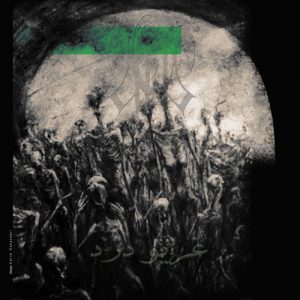Gharive Dard [Cry of Pain] is the name of the first track on this album, which has an epic structure and begins with the sound of timpani, staccato contrabass, and cello. Then the violins begin playing a solo. The rhythm of this piece is the main reason behind the epic feeling it evokes in the listener. Although the violin solo initially enhances this epic sensation, it gradually injects a bitter and heavy sorrow into the listener’s emotions. Interestingly, even this sorrow carries a tone of heroism and valor.
We have encountered this strange emotion before in Aras’s works, in albums like Epic of Sorrow (as its name suggests) and Melancholic Uprising, Aras speaks of an epic that is sorrowful and mournful. But what’s even more interesting is that this piece is actually a symphonic version of one of the oldest Tanmur maqams (traditional melodic modes) called “Jelo Shahi”. This is the first time in the history of Iranian music that a Tanbur maqam, from Iran’s most ancient instrument, is performed and arranged in a symphonic form.
Even though there is no actual orchestra and the sounds are virtual, the orchestral arrangement itself, in my opinion, is no simple task. The name “Cry of Pain”, according to Aras, is derived from a poem by Ahmad Shamlou.
The second track of this album, which, as I mentioned in previous months’ writings, I have a personal connection with, narrates a glorious and passionate epic. Titled “Green Uprising”, this piece, in my view, is the peak of the album. Once again, Aras creates epicness with a virtual symphonic orchestra. (And I wish we could one day witness a live performance of this album with a real orchestra.)
“Green Uprising” begins with the heavy resonance of timpani, a striking cymbal crash, and staccato from cellos and tuba. The grand rhythm at the beginning is incredibly captivating. Then the sound of violins (and possibly a wind instrument, if I’m not mistaken) begins a narration painted in green. Almost all of us Iranians know the reason behind the “green” in this narrative. Aras has dedicated this album to the Iranian Green Movement, and this is clearly evident on the album cover.
In just three minutes, this song will fill you with all the feelings of a true epic. I hope that in the future we get a visual clip for this piece to connect with it even more deeply. I strongly recommend that you listen to this track attentively and separately from the rest of the album.
Finally, in the last piece of the album, the Jelo Shahi maqam is performed as a solo on the tanbur by Aras, a reference to Cry of Pain and, perhaps, a kind of complement to it. Jelo Shahi is one of the ceremonial maqams of the ancient and spiritual instrument tanbur. We’ve heard the sound of tanbur in Aras’s previous works (and we’ll likely hear it again).
The unique playing techniques of the tanbur are clearly evident in this piece. However, the only shortcoming of this track, which unfortunately diminishes the listener’s emotional experience a bit, is the poor recording quality. In my opinion, the sound of the tanbur was more pleasing in the album Melancholic Uprising.